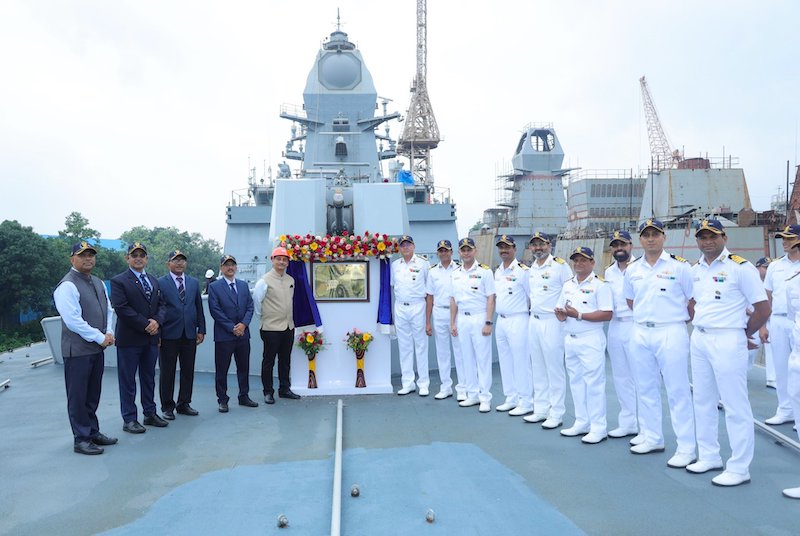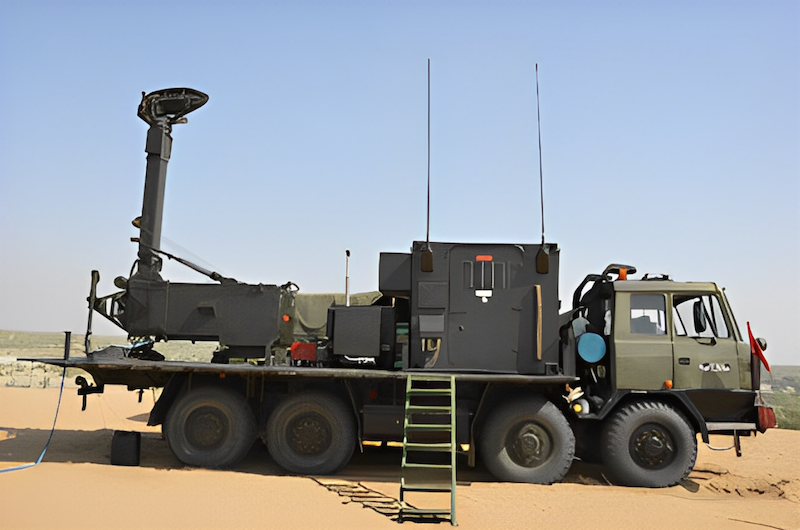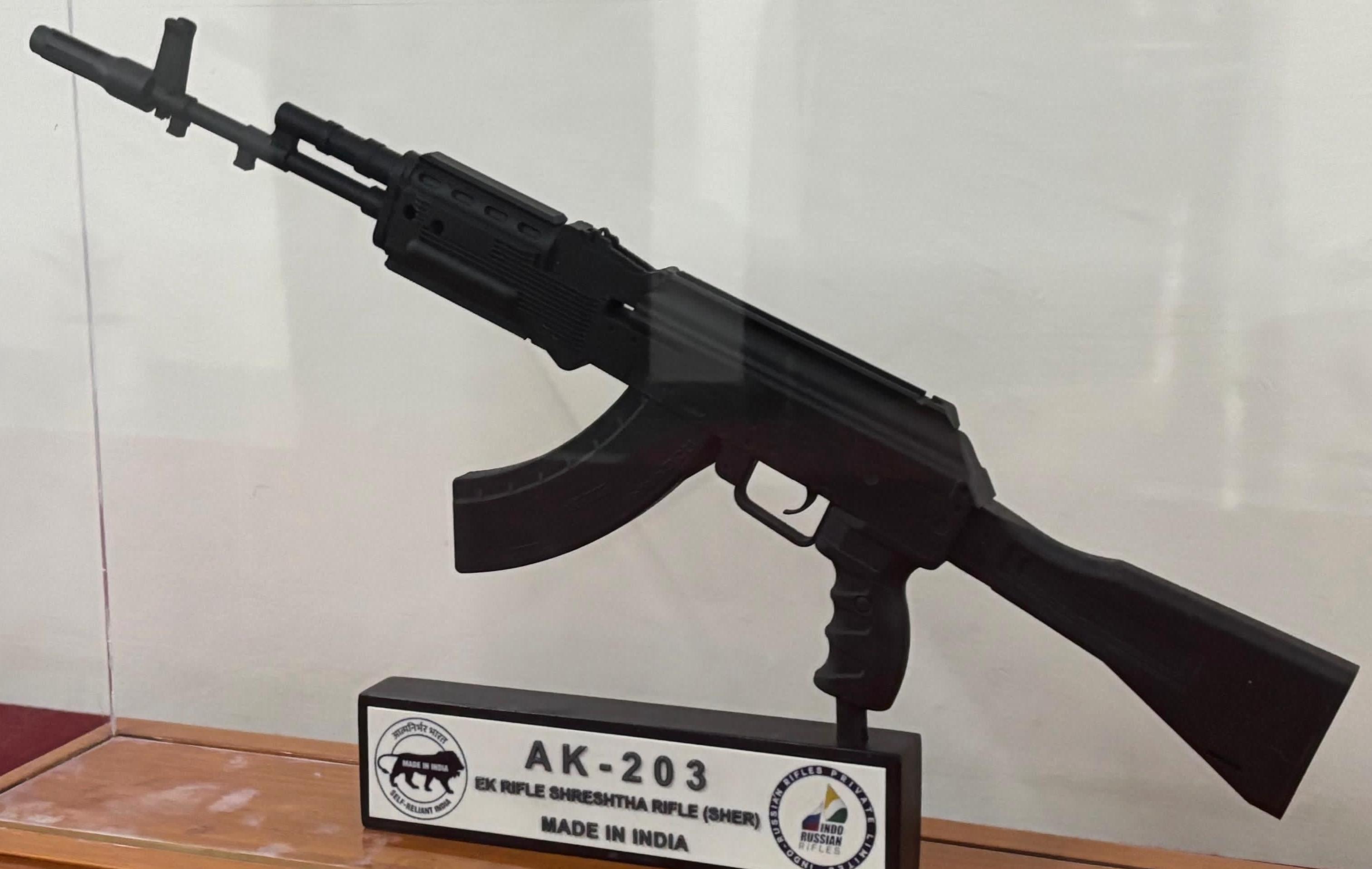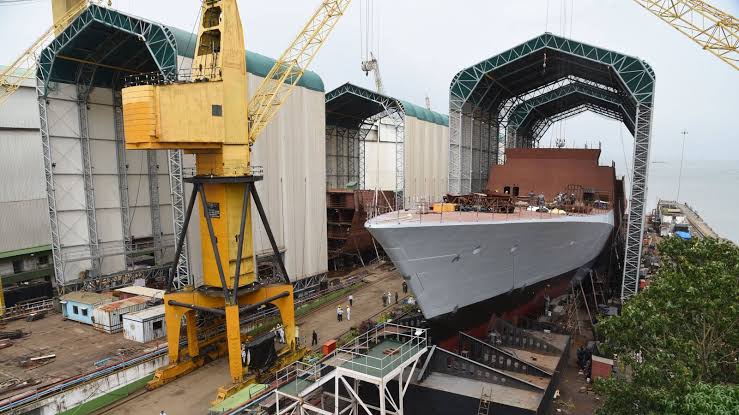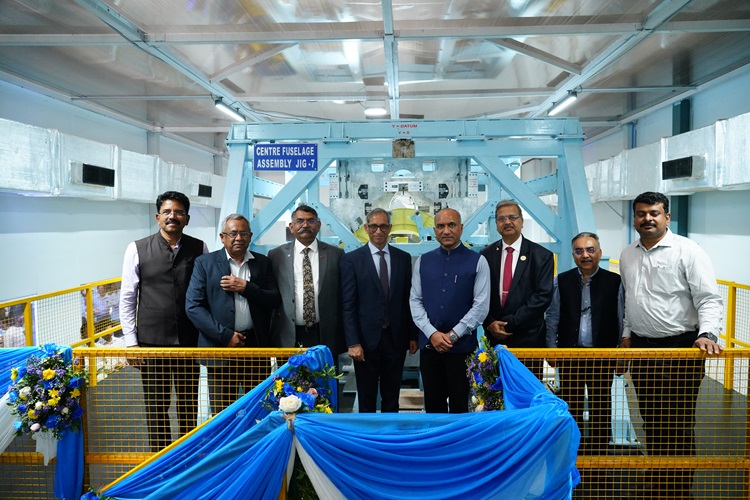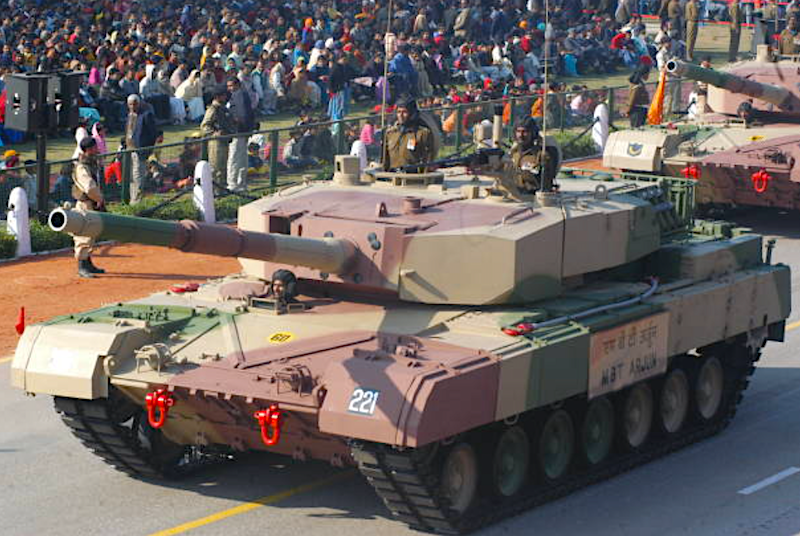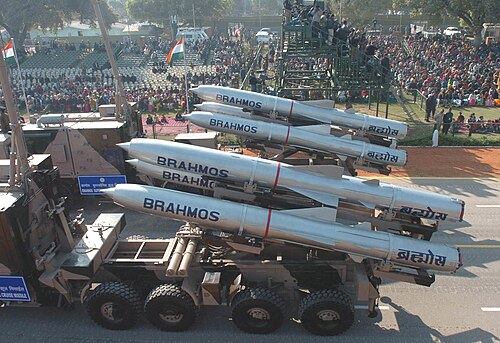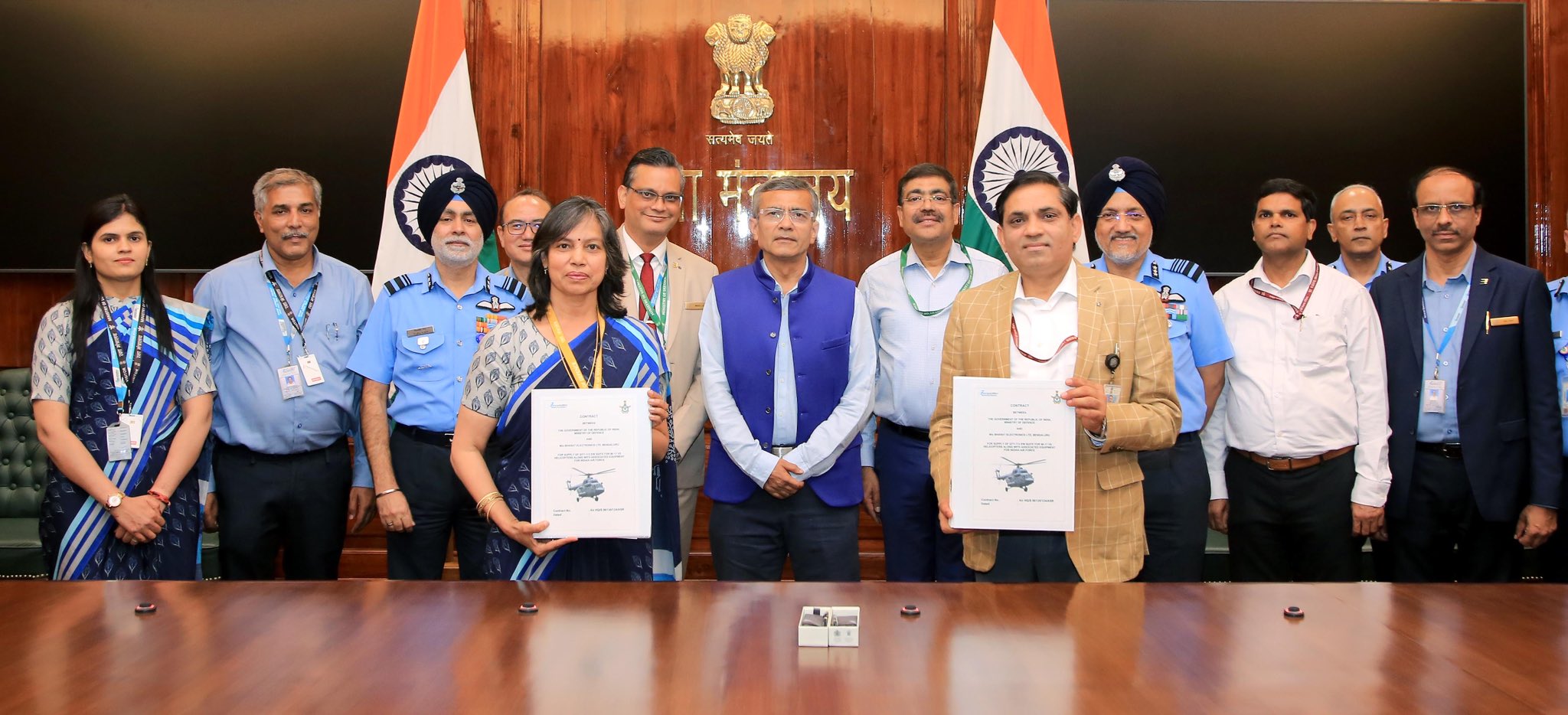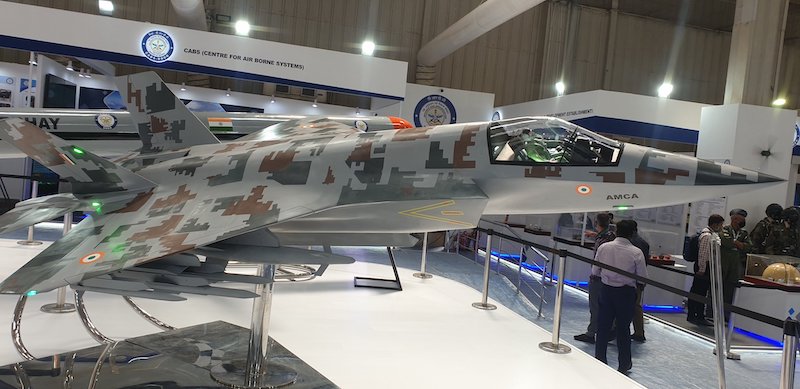 A model of the AMCA on display at the Aero India 2021. (File photo)
A model of the AMCA on display at the Aero India 2021. (File photo)
New Delhi: India has taken a landmark step towards strengthening its indigenous defence manufacturing by opening its most ambitious aerospace project – the advanced medium combat aircraft (AMCA) programme – to private sector participation for the first time.
The defence minister, Rajnath Singh, approved the execution framework on Tuesday, marking a significant departure from traditional practices where state-owned enterprises dominated major military projects. The decision clears the path for both public and private companies to compete on equal footing in developing the country’s first fifth-generation stealth fighter aircraft.
This strategic shift represents New Delhi’s commitment to leveraging broader industrial capabilities to achieve self-reliance in advanced military aviation technology – a sector currently dominated by only three nations globally.
Opens Door to Competitive Bidding
The Aeronautical Development Agency (ADA), an autonomous organization under the Ministry of Defence responsible for aircraft design, will lead the programme through an industry partnership model. The ADA is expected to issue an expression of interest (EoI) shortly for the development phase, which will invite qualified Indian companies to participate in this groundbreaking initiative.
The new execution model provides equal opportunities to both sectors on a competitive basis, with companies able to participate through multiple pathways: bidding independently, forming joint ventures, or creating consortiums, provided they remain Indian entities compliant with national laws.
The ministry emphasized that this represents an important step towards harnessing indigenous expertise while maintaining strict compliance with national security requirements.
Major Industrial Players Queue Up
Several major private sector players have already demonstrated significant interest in the AMCA programme. Tata Advanced Systems Limited (TASL) and Larsen & Toubro have emerged as key contenders following Mahindra Defence Systems’ withdrawal from the AMCA’s special purpose vehicle model.
The exclusion of Mahindra underscores the importance of relevant experience in aircraft manufacturing, as the programme demands sophisticated technical capabilities and proven track records in aerospace development.
TASL brings extensive experience from its partnerships with international aerospace manufacturers and its growing portfolio of defence projects. Meanwhile, L&T’s engineering expertise and manufacturing capabilities position it as a formidable participant as well.
Private companies can also collaborate with foreign original equipment manufacturers (OEMs), enabling technology transfer and knowledge sharing that could benefit India's long-term aerospace capabilities.
Breaking HAL’s Monopoly
Traditionally, the state-owned Hindustan Aeronautics Limited (HAL) has been the sole entity responsible for fighter jet production in India, which handled the bulk of the country’s military aircraft manufacturing. The new model aims to ease HAL’s workload while leveraging the broader capabilities of India’s aerospace industry.
Earlier this year, a defence committee specifically recommended including private firms in military aircraft production to strengthen the Indian Air Force and distribute manufacturing responsibilities more effectively across the industry.
The government plans to outsource assemblies and subassemblies to private firms as much as possible, expanding the supplier base and eliminating bottlenecks caused by reliance on a single manufacturer.
AMCA: India’s Ambitious Fifth-Generation Fighter
The advanced medium combat aircraft represents India’s most ambitious aerospace project yet. It is designed to position the nation among the select few countries capable of developing fifth-generation stealth fighter aircraft. Currently, only the United States, Russia, and China have successfully developed such advanced aircraft.
The programme was initiated in 2010 and received initial approval from the Cabinet Committee on Security, chaired by the prime minister, Narendra Modi, in March 2024 with an estimated budget of ₹15,000 crore (approximately $1.75 billion).
The AMCA is envisioned as a twin-engine, 25-tonne stealth fighter jet featuring cutting-edge technologies including:
* Sophisticated stealth airframe design optimised for low radar cross-section
* Internal weapons bay for maintaining stealth profile
* Diverterless supersonic intake
* Supercruise capability
* State-of-the-art avionics systems with multi-sensor data fusion
* Shoulder-mounted diamond-shaped trapezoidal wings
* Stabilator V-tail configuration
Multirole Combat Capabilities
The aircraft’s mission profile encompasses multiple roles including air supremacy, ground strikes, suppression of enemy air defences, and electronic warfare missions. This versatility positions it as a true multirole platform capable of addressing diverse operational requirements.
The AMCA is designed to carry 1,500 kilograms internally within its stealth configuration and an additional 5,500 kilograms externally when stealth considerations are secondary. With a fuel capacity of 6,500 kilograms, it can conduct extended range operations and deep penetration missions.
Development Timeline
The development timeline reflects the programme’s complexity, with prototype rollout scheduled for 2026-2027, followed by the first flight in 2028. Certification is expected by 2032, with full induction into the Air Force service planned for 2034-2035.
Mass production is anticipated to commence between 2032 and 2033, ensuring India can maintain a steady supply of these advanced aircraft to meet strategic requirements.
The Gas Turbine Research Establishment (GTRE), a premier laboratory under the Defence Research and Development Organization (DRDO), is playing a crucial role in developing indigenous engines for the AMCA. This ensures India will develop propulsion systems capable of meeting fifth-generation fighter aircraft requirements.
The AMCA Mark 1 will feature fifth-generation technologies as its baseline configuration, while the planned Mark 2 variant will integrate sixth-generation capabilities, ensuring the platform remains competitive throughout its operational lifespan.
Strategic Significance
This strategic shift comes amid growing regional security concerns, particularly regarding China’s military support to Pakistan, necessitating rapid enhancement of India’s indigenous defence capabilities.
The programme involves multiple agencies under ADA’s leadership, including the DRDO, which provides scientific and technological support. The Air Force contributes operational requirements and expertise from decades of operating diverse fighter aircraft platforms.
Success in the AMCA programme will establish India as the fourth nation globally with fifth-generation fighter aircraft capabilities. This will significantly enhance its strategic autonomy and defence preparedness while reducing dependence on foreign suppliers for critical military systems.
The initiative represents more than aircraft development – it symbolizes India’s transformation into a major aerospace power capable of designing, developing, and manufacturing sophisticated military platforms indigenously.
Follow us on social media for quick updates, new photos, videos, and more.
Twitter: https://twitter.com/indiasentinels
Facebook: https://facebook.com/indiasentinels
Instagram: https://instagram.com/indiasentinels
YouTube: https://youtube.com/indiasentinels
© India Sentinels 2025-26


